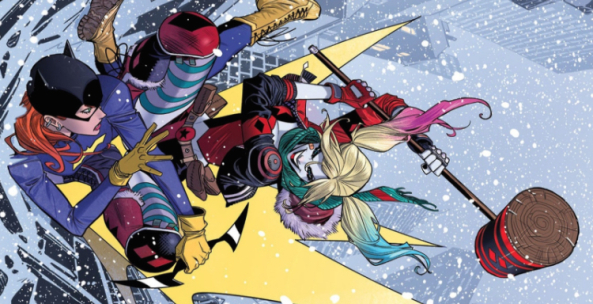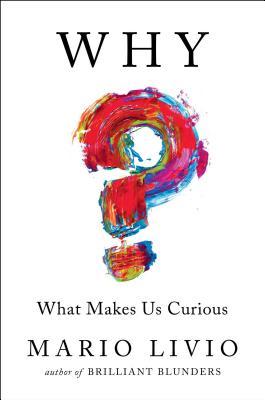 After a case of mistaken identity (Tara Luebbe’s post got credited to Tara Lazar), I asked Tara Lazar if she would answer some questions about ‘concept.’ Tara is the author of The Monstore, Normal Norman, Little Red Gliding Hood, I Thought This Was A Bear Book, 7 Ate 9, and Way Past Bedtime. She’s a regular speaker at SCBWI events, a co-chair of the Rutgers University Council on Children’s Literature Conference, and founder of Storystorm. She’s well-equipped to tackle this confusing topic. Thank you, Tara!
After a case of mistaken identity (Tara Luebbe’s post got credited to Tara Lazar), I asked Tara Lazar if she would answer some questions about ‘concept.’ Tara is the author of The Monstore, Normal Norman, Little Red Gliding Hood, I Thought This Was A Bear Book, 7 Ate 9, and Way Past Bedtime. She’s a regular speaker at SCBWI events, a co-chair of the Rutgers University Council on Children’s Literature Conference, and founder of Storystorm. She’s well-equipped to tackle this confusing topic. Thank you, Tara!
Define concept. How is it different from an idea? How is it different from a plot? For example, what’s the concept, idea, and plot of say Don’t Let the Pigeon Drive the Bus? What is ‘high concept?’
An idea is something quick and a bit vague. Non-specific. It lacks details. Before I wrote 7 Ate 9, I had the idea to write about a ‘popular schoolyard joke.’ Once I had that initial idea, I fleshed it out to a concept, to write about the riddle ‘Why is six afraid of seven?.’ Finally, the story’s premise or plot is the backstory of the joke itself—can Private ‘I’ help 6 figure out if his days are numbered?
7 Ate 9‘s premise is ‘high concept,’ meaning you can boil the essence of the story down to a sentence or two–but not just any sentence. Many stories can be explained that quickly. To be ‘high concept’, the premise has to be unique and make immediate, head-smacking sense. You’ve never seen the concept before but it seems like you should have! People can instantly envision how things might play out. They may even say, ‘That’s genius! Why didn’t I think of that?!’
An idea for Don’t Let the Pigeon Drive the Bus might be to write a story from an unusual, uncommon point of view. (But honestly, I have no idea what Mo WIllems was thinking, LOL, other than he was thinking genius.) The concept might be to have the book character ask the child reader permission to do something outrageous, with the child getting to act like an adult and say ‘no,’ turning the tables on the usual child role. The plot is to have the pigeon ask the reader permission to drive a bus.
So, if I got this right, let’s say the concept for They All Saw a Cat is something like, “A cat is viewed in a different way depending on which creature sees him.” Would that be high concept? And is it safe to say that the concept is the bones and plot is the flesh?
Yes, I will enthusiastically agree with all of that! Except They All Saw a Cat doesn’t have a plot because it’s a ‘concept’ book. The concept is seeing the cat from various points of view–from a frightened mouse to a ferocious dog.
Why is concept even important?
Because people judge picture books by the cover!
You have less than ten seconds to hook a potential buyer. They have to be grabbed by the subject of your story–the image on the cover–and title, and the quicker they can envision what’s inside, the more likely they are to pick up your book.
The concept you present to an agent then gets presented to an editor. The editor presents it to their editorial team, then it goes to acquisitions–where sales and marketing are often involved. Sales and marketing present it to distributors and booksellers. And finally, the booksellers use it to sell customers the book. There is a chain from you right down to the consumer, and the shorter and quicker it is to hook everyone down that line, the more likely your book will do well AND SELL!
What are some concepts that are overdone and not likely to turn heads unless they really, really standout?
Alphabet books, a child moving, a new baby in the family, getting a pet, and preachy message stories. Go to any SCBWI first-page session and you will hear a lot of these tales. Remember, there are thousands of picture books published every year. You have to invent a story that has not already been told.
And toothfairy stories–I hear a lot of those as well. I was listening to a first page critique session, and more than once, I heard the agent or editor say, “Great writing, overdone concept. Pick something else.” In other words, you can have the best written story out there, but if your concept doesn’t turn heads, it’s not going going to be picked up by a publisher. How do we avoid that?
This is why I created Storystorm–a month-long story brainstorming challenge. Our minds tend to go to the common ideas first. Not until you have been brainstorming a while do you unearth the deeply-buried treasures. Idea-gathering is something writers should be doing on a regular basis to avoid stale and tired concepts.
Storystorm is awesome. I’ve got lists of ideas from doing that, and you’re right, when you’re trying to get a certain amount of ideas in a short amount of time, you do have to stretch beyond the obvious. Speaking of which, let’s talks about The Monstore–kids and monsters–obvious idea, but you took that and made it unique. How did you push that idea beyond the obvious?
With The Monstore, the initial idea came with the title–a store where you buy monsters. The concept did not come together until I sat down to write it, though. When Zack wanted to return his monster, I knew I couldn’t let him … that’s when I wrote the ‘no returns, no exchanges’ bit, and the story fell into place.
Sometimes you just have to stop overthinking it and just sit down and write–you’ll be amazed at what flows out. You don’t have to have all of the puzzle pieces figured out before you write the manuscript, but at least have a concept together. Think of your concept as the edge of your puzzle. As you write, you fill in the pieces until it all locks into place.
So Storystorm is coming up in January, yes? Where can interested parties sign up to get more information?
Yes, Storystorm is in January and it’s free. Registration will go live at taralazar.com at the end of the year.
You’ll get a lot of ideas in January, but know that every idea isn’t going to be great. The more ideas you have, however, the better your odds of hitting on a winning concept.
You can subscribe to Tara’s blog at taralazar.com or follow her on Twitter, @taralazar, to receive notifications about Storystorm.
Additional Resources:
For more on how Tara created The Monstore: http://www.karlingray.com/blog.htm?post=1021995
For more about concept:
http://www.writersdigest.com/qp7-migration-books/story-engineering-excerp
http://www.writersdigest.com/tip-of-the-day/writing-a-novel-the-four-elements-of-a-solid-story-concept
http://nelsonagency.com/2017/11/what-is-a-high-concept-and-do-you-need-one-by-danielle-burby/?platform=hootsuite
https://www.helpingwritersbecomeauthors.com/story-concept/
https://www.writingforward.com/storytelling/what-is-a-story-concept
https://www.writersstore.com/high-concept-defined-once-and-for-all
http://www.scriptmag.com/features/story-talk-high-concept-yes-it-actually-means-something
Advertisements Comparte:
- More





